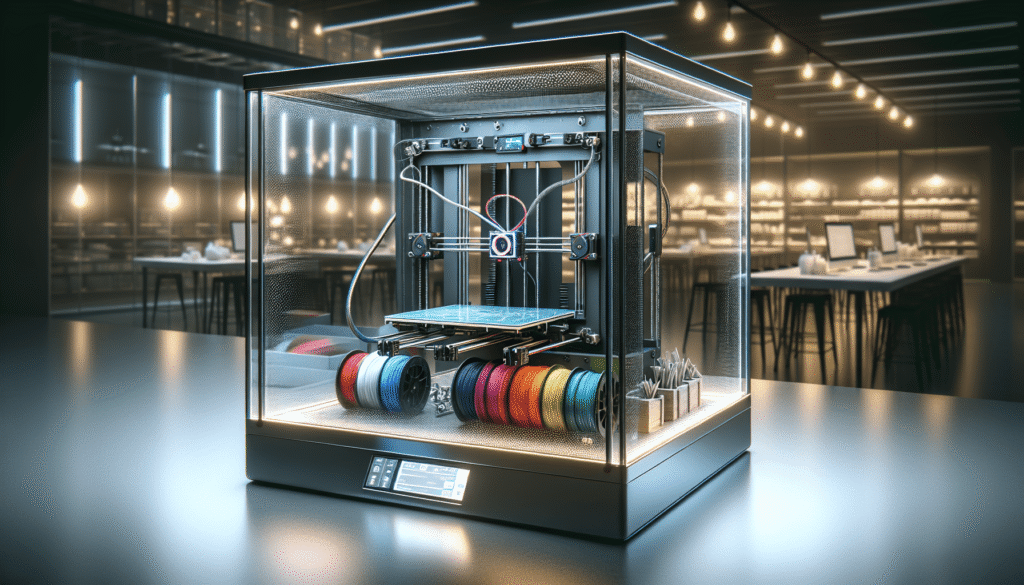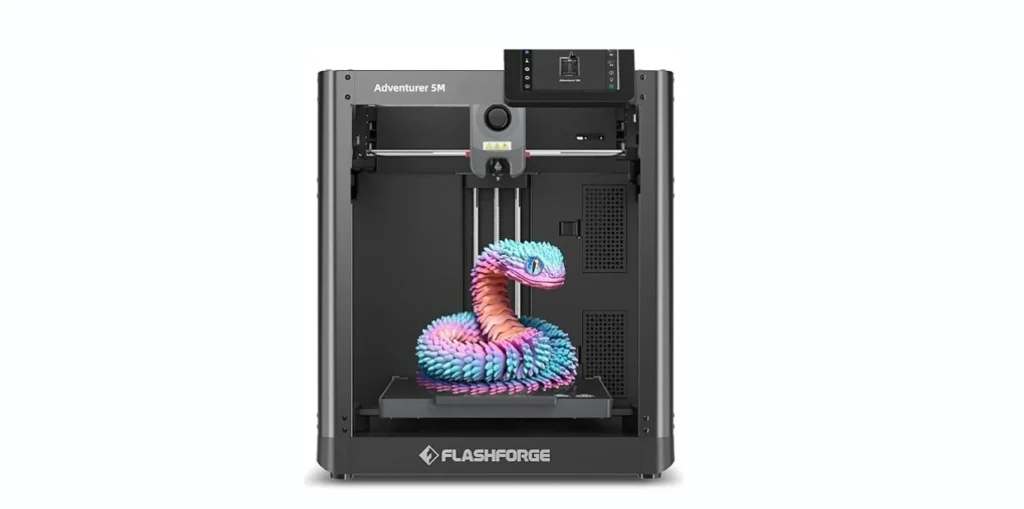Have you ever wondered if a 3D printer enclosure is truly necessary? It’s not uncommon to hear debates swirling around in maker communities: some swear by enclosures and some dismiss them as mere accessories. Let me dive into this multifaceted topic with you, as I explore the quirks and peculiarities of 3D printer enclosures. Take a seat, grab some tea, and let’s navigate the fascinating world of 3D printing.

What is a 3D Printer Enclosure?
Before delving into whether they’re worth it, let’s understand what a 3D printer enclosure actually is. Picture a box that houses your 3D printer—a sort of warm, comfortable blanket for your machine. This enclosure is designed to contain the printer and often boasts features like temperature control, noise reduction, and even air filtration. Imagine an enclosure as a mini-habitat tailored for your printer’s needs, striving to create ideal conditions for it to operate.
An enclosure might look simple, but its function goes beyond just aesthetics. It’s like when you wrap yourself in your favorite fuzzy blanket to ward off winter’s chill. In this cozy realm, the printer experiences a stable environment, away from drafts, dust, and any prying noses that might take interest in the hum of technology.
The Key Benefits of a 3D Printer Enclosure
Now that we’ve defined what a 3D printer enclosure is, let’s list the benefits. They may seem straight out of an infomercial, but hear me out. While you’re sipping that tea, consider these advantages:
- Temperature Control: A constant temperature avoids warping problems in prints.
- Noise Reduction: Enclosures can noticeably dampen those humming noises.
- Dust Protection: Keep those pesky particles away from your masterpiece.
- Improved Safety: Protects both curious fingers and curious pets.
- Odor Management: Filters can help with the sometimes-not-so-pleasant fumes of certain filaments.
Temperature Control: Keeping It Toasty and Smooth
Temperature consistency is crucial in successful 3D printing. The main goal here is to minimize the risk of warping that a fluctuating temperature might cause. If you think back to baking—turning out a soufflé requires the right constant heat just as much as printing in ABS or other temperature-sensitive materials does. The enclosure maintains a steady environment which ensures your print won’t crack under pressure.
Noise Reduction: A Journey to Zen
The whirring and occasional high-pitched whines of a printer may be music to some ears (mine included), but it’s not always appreciated—especially by the non-makers trying to nap in the room next door. A good enclosure can noticeably reduce the noise pollution. It’s not like sound-proofing your garage for band practice, but it makes a difference. How much better is it to dream away with just a gentler hum in the air?
Dust Protection: Cleaner is Better
An enclosure also acts as a moat that defends your printer against dust and debris. Much like how I protect my croissants from marauding ants, the printer is similarly shielded. This protection ensures that your prints are free from unwelcome specks that might mar their surface. It gives cleanliness a dimension I never knew existed until I noticed printer parts lasting longer thanks to the lack of abrasive invaders.
Improved Safety: Because Accidents Happen
Then, there’s safety. Just imagine: one moment, you’re marveling at your print, and the next, your adventurous cat knocks over your printer. An enclosure provides a layer of physical protection, creating a barrier that shields both the machine and inquisitive creatures—be they human toddler or feline explorer. That extra safeguard can be priceless.
Odor Management: A Breath of Fresh Air
We can’t ignore those smelly filaments. Many enclosures have integrated filters aimed to reduce odors emitted during printing. Who needs a noseful of melted plastic smell when trying to appreciate their own masterpiece? Breathing cleaner air trumps the nostalgia of childhood days spent gluing model airplanes, even when the memory of acetone seems tempting.
Downsides to 3D Printer Enclosures: Not All Roses
While enclosures offer enticing benefits, they aren’t entirely devoid of drawbacks. This part might feel like raining on the pretty parade, but it’s essential to provide a balanced view:
- Cost: Enclosures can be pricey, sometimes exceeding the printer itself.
- Limited Printer Access: Enclosures may restrict access and limit printer visibility.
- Complex Assembly: Some enclosures can be challenging to assemble.
- Ventilation Challenges: A poorly-designed enclosure can trap heat too effectively.
Cost: The Budget Conversation
This is the sticky wicket, isn’t it? Sometimes, the price of a good enclosure rivals the cost of mid-range 3D printers themselves. The idea of doubling your invested capital just so your printer can live in posh digs might seem frivolous. It’s akin to paying boutique rent for a room with a view that cancels out the savings from that coupon you clipped with so much care.
Limited Printer Access: Peek-a-Boo, I Can’t See You
With an enclosure in place, accessing the printer isn’t as straightforward. Perhaps you’ve had a moment where you can’t take your eyes off a mesmerizing print-in-progress. Well, an enclosure can curtail your view, obstructing the part of the process that makes you feel like a creator engaged in digital artistry. For some printers, adjustments during the print become cumbersome, akin to trying to adjust a radio knob while driving.
Complex Assembly: The Puzzle
Some enclosures come flat-packed, akin to furniture requiring assembly. I recall struggling with such a jigsaw puzzle of parts, screws, and incomprehensible instructions, reminding me of trailing dotted Ikea instructions. For those of us more inclined to hit ‘start’ than dive into the world of hex keys, arranging an enclosure is not always an inviting task.
Ventilation Challenges: Hot and Bothered
Ventilation is crucial for the printer’s performance. The irony of an enclosure designed to manage temperatures trapping too much heat is not lost on me—there’s something poetic about a solution that creates its own problem. Enclosures should provide ventilation that ensures mechanisms don’t overheat, but in some cases, that’s easier said than done.
Comparing Printer Types: Which Ones Benefit Most from Enclosures?
When it comes to choosing an enclosure, it’s worth considering the type of 3D printer you have. After all, not all printers benefit equally from the cocooning embrace of an enclosure. Let’s break down a few common types:
| Printer Type | Ideal for Enclosure? | Rationale |
|---|---|---|
| FDM (Fused Deposition Modeling) | Yes | FDM printers benefit from temperature stability and noise reduction. |
| SLA (Stereolithography) | Less So | SLA printers don’t generally need temperature control, though they benefit from dust protection. |
| SLS (Selective Laser Sintering) | Generally, No | SLS printers usually have built-in enclosures. |
FDM Printers: Your Best Bet for Enclosure Success
FDM printers are like the butter to an enclosure’s bread. Given their reliance on even, stable temperatures, they thrive enclosed. In terms of reducing noise and managing odors, FDM printers fit the bill beautifully. Imagine, if you will, the satisfaction of a perfectly browned toast popping up at the optimal moment—such joy rests in housing your FDM within an enclosure.
SLA Printers: Dust Control Comes Into Play
For SLA printers, the primary benefit of an enclosure is dust protection. As these printers typically use resin, the odor and temperature concerns aren’t as pressing, thus relegating enclosures to a secondary consideration, more akin to an added bonus than a necessity.
SLS Printers: Built-in Comfort
SLS printers often come with their own built-in enclosures, rendering aftermarket ones redundant. It’s as if the enclosure were the printer’s natural habitat—comfortable, stable, and purpose-aligned. It’s precisely this alignment that reduces the desirability or need for an additional aftermarket enclosure.

Materials for Building or Buying an Enclosure
If you’ve decided the benefits outweigh the potential drawbacks, the next decision awaits: building or buying. And with that comes another question—what material should you use or look for? Let’s take a journey through the options available.
Buying an Enclosure: Why Reinvent the Wheel?
When buying, you’ve got choices ranging from fabric to metal-framed options. Let’s consider a table that sketches some of these:
| Material | Durability | Aesthetics | Cost | Suitability for DIY |
|---|---|---|---|---|
| Fabric and Zipper Panels | Moderate | Medium | $$ | Low |
| Acrylic or Polycarbonate | High | High | $$$ | Moderate |
| Metal Panels | High | Low | $$$ | Low |
These materials offer varying levels of visibility, durability, and aesthetic appeal. I can’t forget the time I got lost comparing acrylic to fabric, before conceding to the reality that transparent panels have an unparalleled charm—they make observing prints feel futuristic.
Building Your Own Enclosure: Craft and Customization
Creating your own enclosure is an option for the resourceful or bespoke-inclined. Consider wood framing, for instance, or even upcycling materials you already have. If you’ve got some spare sheets of acrylic or wood, ponderously sitting in the corner post-dust extraction, why not turn them into your veritable maker masterpiece?
While creating a custom enclosure can save on costs and allow for creative expression, it certainly requires time, effort, and a smidgen of woodworking skill. While my skills sit squarely with managing mishaps, the joy of showcasing your handiwork can be rewarding.
Conclusion: Weighing the Worth
So, are 3D printer enclosures worth it? Ultimately, I believe it depends on your specific needs and printer type. They offer undeniably valuable benefits, particularly in maintaining a consistent environment for FDM printers and enhancing operational safety and longevity. However, the associated costs and potential limitations warrant consideration.
While I think fondly of enclosures as nurturing cocoons for buzzing machines, you’ll need to weigh your priorities. For some, seasoned makers with established print setups might appreciate the investment, while those casually solving weekend puzzles with print spools may continue crafting in ambient conditions.
And so, as you navigate your 3D printing journey, may the perfect enclosure, should you choose one, be a seamless extension of your creative habitat.
